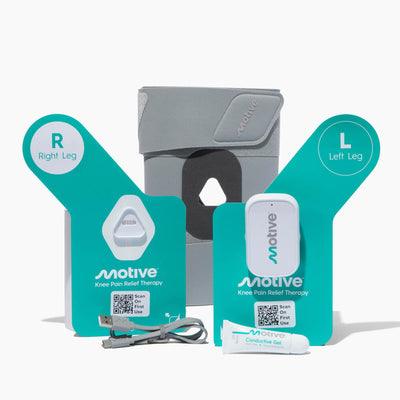
Are you experiencing knee pain after a round of golf? You’re not the only one. Many golfers suffer from golfer’s knee, resulting from the repetitive twisting motion and rotational force from their golf swing. This strain on the knee joint can lead to swelling, discomfort, and even more serious knee injuries.
In fact, research by the National Library of Medicine has shown that golf-related knee injuries account for approximately 3 to 18% of all golf-related injuries. People over 65 are often more vulnerable to these injuries due to reduced flexibility and slower recovery times.
In this article, we’ll review the causes and symptoms of a golfer’s knee, explore common golf injuries related to the condition, and discuss effective prevention and treatment strategies. By understanding and addressing golfer’s knee, you can protect your lead knee and enhance your performance on the golf course.
What is a Golfer's Knee?
Golfer’s knee refers to the discomfort or injury in the knee joint resulting from the repetitive motions and physical demands of playing golf. The sport’s characteristic twisting motion and rotational force during a golf swing can place significant stress on the knee joint, particularly the lead knee (the left knee for right-handed golfers and the right knee for left-handed golfers).
If you’re experiencing golfer’s knee, you may notice:
-
Pain: Aching or sharp pain in the knee during or after playing golf.
-
Swelling: Inflammation or puffiness around the knee joint.
-
Stiffness: Reduced range of motion, making it difficult to bend or straighten the knee.
-
Instability: A sensation that the knee may give way during movement.
Several factors contribute to the development of golfer’s knee:
-
Repetitive Stress: The continuous rotational movement of the golf swing can lead to overuse injuries in the knee.
-
Improper Technique: Incorrect form when swinging increases strain on the knee ligaments and muscles.
-
Lack of Conditioning: Weakness in the muscles supporting the knee, such as the quadriceps and hamstrings, can heighten injury risk.
-
Age-related Changes: Degenerative conditions like osteoarthritis can make older golfers more susceptible to knee pain.
-
Previous Injuries: Golfers with a history of knee injuries, such as meniscus or ligament tears, can be predisposed to recurring issues.
Common Golf Injuries Related to Golfer's Knee
While golfer's knee is a prevalent issue among enthusiasts, it’s essential to recognize other knee-related injuries that can arise from the sport’s repetitive motions and physical demands.
Meniscus Tears
The meniscus comprises two crescent-shaped cartilage discs acting as shock absorbers between the thigh bone (femur) and shinbone (tibia). A sudden twisting motion during a golf swing or squatting to retrieve a golf ball can tear the meniscus, resulting in knee pain, swelling, and joint instability.
ACL Tears
The anterior cruciate ligament (ACL) is crucial for stabilizing the knee joint. Although more common in high-impact sports, an improper golf swing or abrupt pivot can strain or tear the ACL, leading to significant knee instability, pain, and potential long-term mobility issues.
Patellofemoral Pain Syndrome (PFPS)
PFPS, often termed runner’s knee, involves pain around the kneecap (patella) due to improper alignment or overuse. In golfers, repetitive knee flexion and extension during swings can exacerbate this condition, causing discomfort during activities like walking or ascending stairs.
Tendonitis
Knee tendonitis is the inflammation of the tendons around the knee, commonly resulting from overuse. Golfers may develop this condition due to the repetitive motions inherent in the sport, which can lead to pain, swelling, and tenderness around the knee area.
Knee injuries are among the top concerns for athletes, including golfers. According to the University of Utah Health, more than 50% of sports injuries involve the knee, underscoring the joint’s vulnerability across various physical activities.
Prevention and Treatment of Golfer's Knee
A golfer’s knee can hinder performance on the golf course, but with appropriate preventive treatments and measures, knee pain can be alleviated, and the risk of injury can be reduced.
Warm Up Before and Cool Down After
Engaging in a thorough warm-up before playing golf increases blood flow to the muscles, enhancing flexibility and reducing the likelihood of injury. Similarly, cooling down post-game helps in muscle recovery and minimizes stiffness.
Incorporate dynamic stretches targeting the knee joint and surrounding muscles during warm-up, and perform gentle static stretches during cool-down.
Power Up Your Quads and Hamstrings
Building strength in the quadriceps and hamstrings improves support for the knee joint and enhances stability during golf swings.
Exercises such as leg presses, hamstring curls, and squats can be beneficial. A strong lower body also contributes to improved performance and injury prevention.
Stretch It Out, Swing It Right
Maintaining flexibility in the lower body is crucial for a full range of motion during your swing. To reduce muscle tightness and prevent strain on the knees, incorporate stretching exercises that focus on the quadriceps, hamstrings, and calves into your routine.
Regular stretching can also alleviate existing joint pain and improve overall mobility.
Therapy That Gets You Back on Course
Consulting a physical therapist can provide personalized exercises and treatments tailored to your specific condition. Physical therapy exercises designed to strengthen the muscles surrounding the knee improve flexibility, enhance joint stability, and incorporate techniques to alleviate swelling and discomfort.
This approach not only aids in recovery but also equips you with strategies to prevent future injuries.
Brace for It (But Don’t Rely on It!)
Using knee braces or taping can offer temporary support and alleviate pain during play. However, they should not replace proper conditioning and rehabilitation, as over-reliance can lead to weakened muscles over time.
It’s essential to address the underlying causes of knee pain rather than solely relying on external support.
Temporary Relief with Proper Medications
Over-the-counter nonsteroidal anti-inflammatory drugs (NSAIDs) can help manage pain and reduce swelling.
Always consult with a healthcare professional before starting any medication regimen to ensure it is appropriate for your situation and will not interfere with other health conditions or medications.
Motive Knee: Your Key to an Improved Game
When knee pain threatens to derail your game, Motive Knee is the solution you need. This innovative wearable technology uses neuromuscular electrical stimulation (NMES) to strengthen the muscles around your knee, providing support and stability from the inside out. Here’s how it can transform your experience on the golf course:
Strengthens and Stabilizes for Peak Performance
Golf can put significant stress on your knees. Motive Knee helps counteract this by stimulating your quadriceps muscles, which are essential for knee stability and power. Stronger quads mean less strain on your joints, allowing you to swing with confidence and maintain your form throughout your game.
Relieves Pain and Promotes Recovery
Motive Knee not only strengthens your muscles but also helps alleviate pain and accelerate recovery. The gentle electrical stimulation increases blood flow to the area, reducing inflammation and promoting healing. This means less discomfort after a long day on the course and a faster return to play. Simply wear it for 30 minutes each day to experience the benefits.
Versatile Relief for All Your Activities
While Motive Knee is a game-changer for golfers, its benefits extend far beyond the course. Whether you're a runner, cyclist, or simply enjoy an active lifestyle, Motive Knee can help you manage knee pain, improve stability, and stay at the top of your game.
Don't let knee pain hold you back. Choose Motive Knee and experience the difference!
Learn more about how Motive can help you achieve your goals and keep your knees feeling their best.





